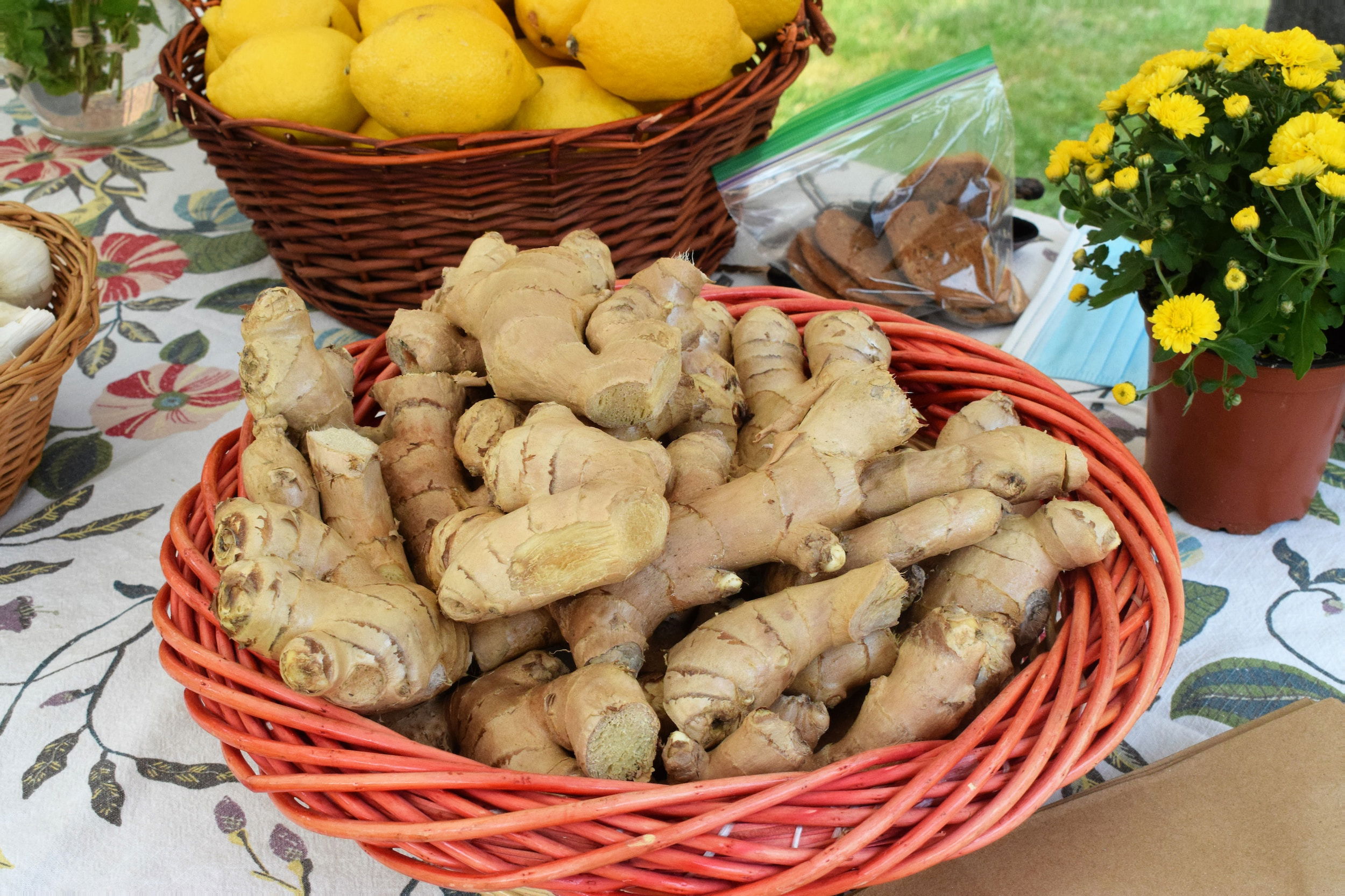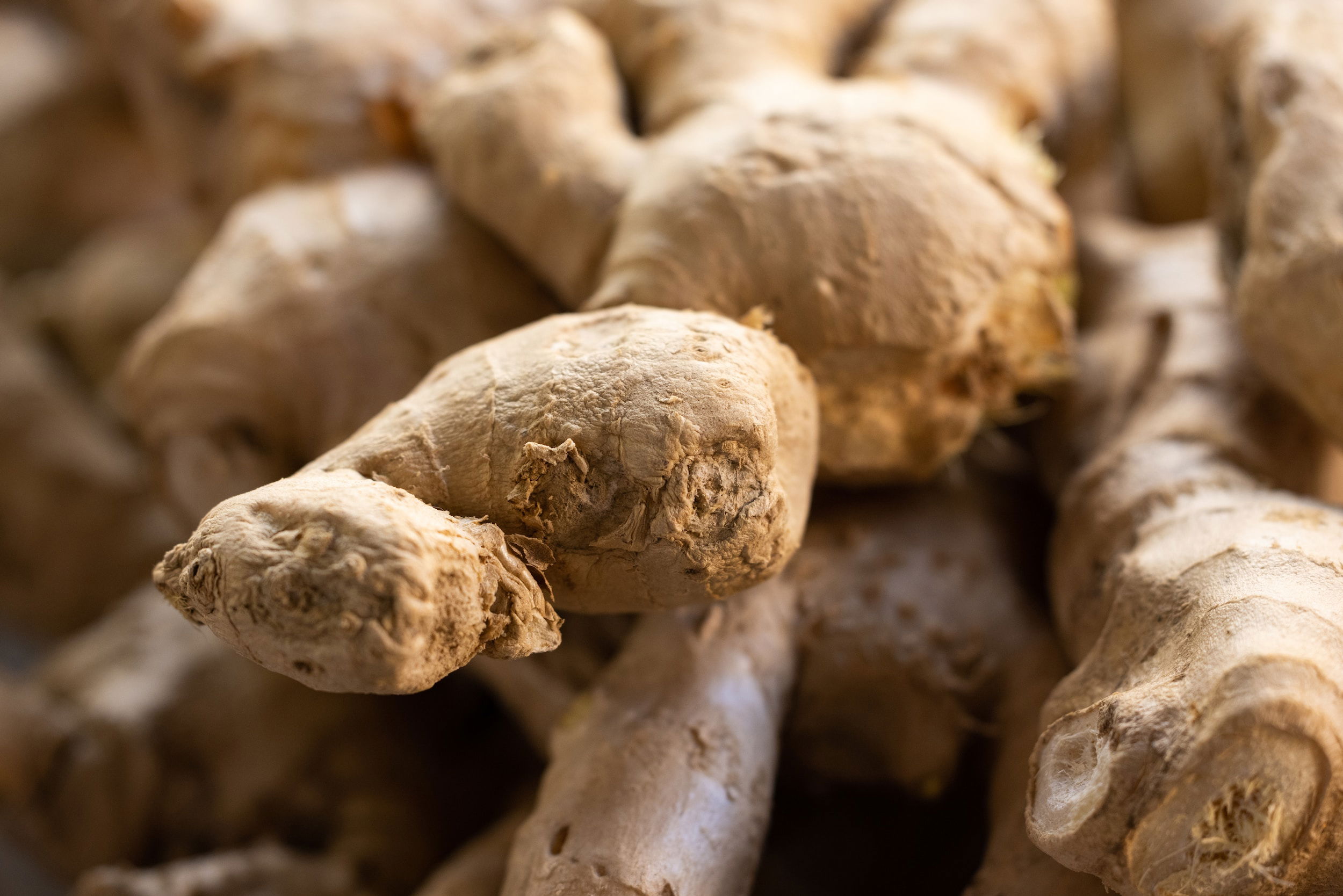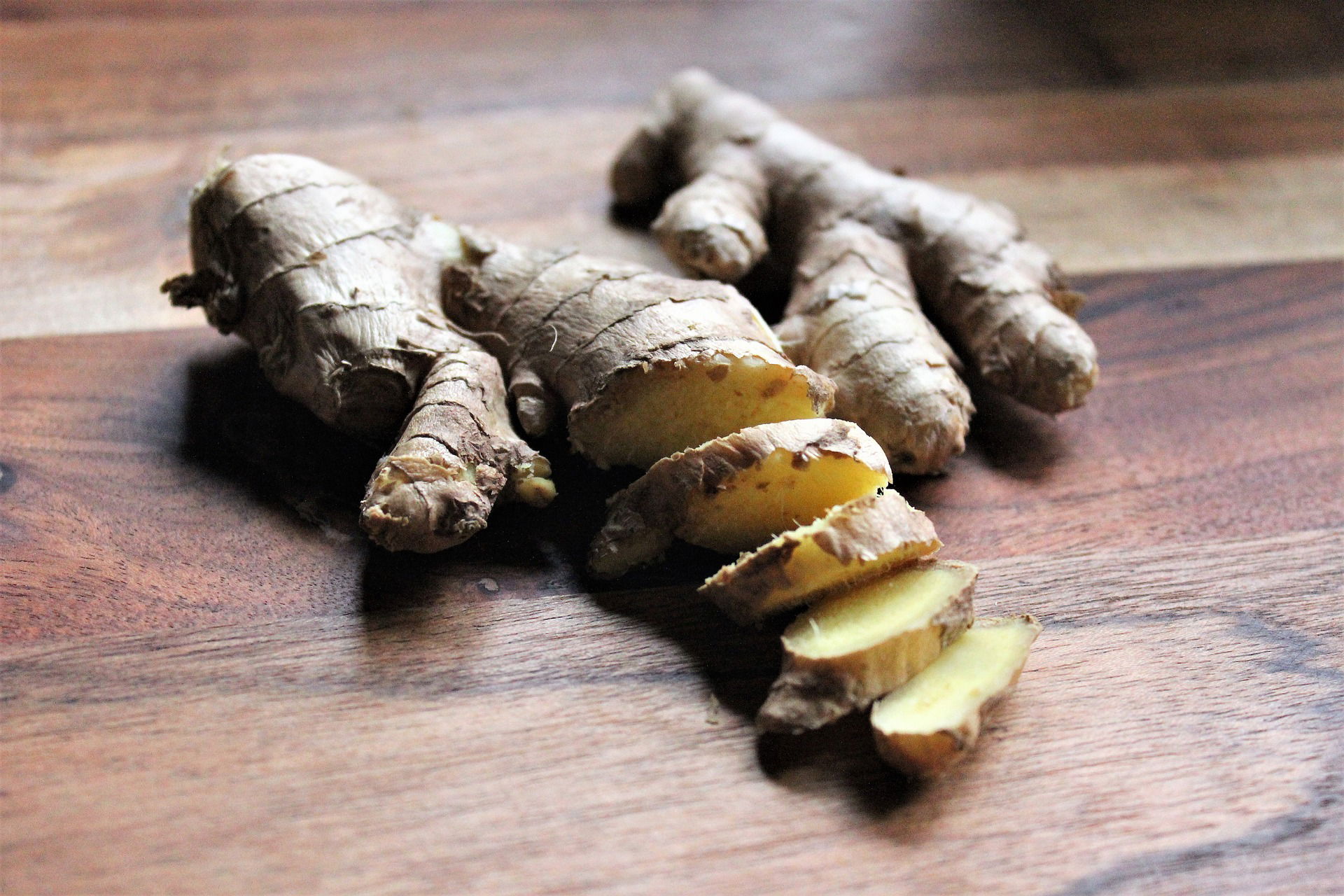Introduction to fresh ginger's popularity in the USA

Ginger, a versatile and aromatic root, has gained immense popularity in the United States in recent years. With its unique flavor and numerous health benefits, fresh ginger has become a staple ingredient in kitchens across the nation. This article delves into the growing trend of fresh ginger consumption in the USA, exploring its historical background, nutritional value, culinary uses, and its impact on the local agricultural industry. Additionally, we will discuss tips for selecting, storing, and using fresh ginger, as well as its traditional and alternative medicinal uses. Lastly, we will explore future trends and innovations in the fresh ginger market, providing a comprehensive overview of this fascinating ingredient's journey in the USA.
1. Introduction to fresh ginger's popularity in the USA
1.1 Historical background and cultural significance
Ginger, known for its distinct flavor and numerous health benefits, has a rich history and cultural significance in the United States. From being used in traditional remedies to spicing up culinary creations, ginger has found its way into the hearts and kitchens of Americans.
Since ancient times, ginger has been revered for its medicinal properties, believed to aid digestion, relieve nausea, and reduce inflammation. It was even used as a currency during the colonial era due to its high demand. Over time, ginger's popularity has grown, making it a staple ingredient in various cuisines.
1.2 Recent surge in demand and consumption
In recent years, there has been a noticeable surge in the demand and consumption of fresh ginger in the USA. People are becoming more health-conscious and seeking natural remedies for common ailments. Fresh ginger, with its potent antioxidants and anti-inflammatory compounds, has captured their attention.
Moreover, with the rise of international cuisines and fusion cooking, ginger has become a go-to ingredient for adding depth and flavor to dishes. Its versatility allows it to be used in everything from soups and stir-fries to baked goods and beverages. As a result, fresh ginger has become a pantry staple in many American households.

2. Health benefits and nutritional value of fresh ginger
2.1 Key nutrients and compounds found in fresh ginger
Fresh ginger packs a nutritional punch with its impressive array of vitamins, minerals, and bioactive compounds. It is a good source of vitamin C, potassium, magnesium, and manganese. However, its real star power lies in the volatile oils gingerol and zingerone, which give it its distinct spicy taste and potent health benefits.
2.2 Potential health benefits and their scientific basis
Research suggests that fresh ginger may offer a range of health benefits. Its anti-inflammatory properties are known to help reduce muscle soreness and alleviate symptoms of arthritis. Gingerol, a prominent compound in ginger, has shown promising effects in reducing nausea and vomiting, making it a natural remedy for pregnant women and those undergoing chemotherapy.
Additionally, fresh ginger may support digestion by stimulating the production of digestive enzymes and promoting gut health. It is also believed to have immune-boosting effects, thanks to its antioxidant content. While further research is needed to fully understand ginger's potential, it's clear that this root has much more to offer than just flavor.

3. Growing and sourcing fresh ginger in the USA
3.1 Suitable climates and regions for ginger cultivation
Contrary to popular belief, ginger can be successfully grown in certain regions of the United States. It thrives in warm and humid climates, making states such as Florida, Hawaii, and parts of the Gulf Coast ideal for cultivation. However, with advanced greenhouse technologies, ginger can also be grown in colder regions.
3.2 Sustainable farming practices and organic ginger production
Many ginger farmers in the USA are adopting sustainable farming practices to minimize the environmental impact of ginger production. Organic ginger farming is gaining momentum, with farmers avoiding the use of synthetic pesticides and fertilizers. This not only benefits the consumers but also ensures the long-term health of the soil and surrounding ecosystems.
3.3 Challenges and opportunities for domestic ginger farmers
While the demand for fresh ginger is rising, domestic ginger farmers face challenges such as competition from imported ginger and the high cost of production. However, there is an opportunity for local farmers to leverage their freshness and quality, appealing to consumers who prioritize supporting local businesses and reducing carbon footprints. Additionally, diversifying ginger products, such as dried ginger slices or ginger powder, can open doors to more markets.

4. Culinary uses and popular recipes with fresh ginger
4.1 Versatility of fresh ginger in various cuisines
Fresh ginger is a culinary superstar, adding a zesty kick to a range of dishes across different cuisines. It is commonly used in Asian stir-fries, curries, and soups, where it infuses the entire dish with its distinctive aroma and heat. In Western cuisine, ginger finds its way into marinades, dressings, and even desserts, balancing out flavors and adding complexity.
4.2 Traditional and modern ginger-infused dishes
Many traditional recipes celebrate the vibrant flavors of ginger. From ginger-infused salmon to gingerbread cookies, the root's versatility shines through both sweet and savory dishes. For those looking for a modern twist, ginger can be incorporated into smoothies, cocktails, and even ice creams, taking taste buds on an adventurous journey.
4.3 Ginger-based beverages and desserts
Ginger is a star ingredient in popular beverages and desserts. Ginger tea, often combined with lemon and honey, is a comforting and soothing drink enjoyed by many. Ginger ale and ginger beer, with their refreshing and spicy notes, have become popular alternatives to sugary sodas. In the realm of desserts, ginger takes center stage in cakes, cookies, and even ice cream, offering a delightful fusion of sweet and spicy.
So, whether you're seeking a health boost or looking to spice up your culinary creations, fresh ginger has become a beloved ingredient in the USA. Its rich history, versatile uses, and potential health benefits make it a root worth exploring in your kitchen. So go ahead, embrace the ginger revolution and let your taste buds dance with delight!

5. The impact of fresh ginger on the local agricultural industry
5.1 Economic significance and market demand
Fresh ginger has become a rising star in the United States agricultural industry, and its economic significance cannot be understated. As consumer interest in healthy, natural ingredients continues to grow, so does the demand for fresh ginger. This spicy root has found its way into countless recipes, beverages, and even beauty products, creating a booming market that provides ample opportunities for local farmers to thrive.
5.2 Job creation and supporting local farmers
The increasing demand for fresh ginger has led to job creation and employment opportunities for many individuals in the agricultural sector. Local farmers are embracing the cultivation of ginger as a way to diversify their crops and meet the rising market demand. By supporting local ginger farmers, consumers not only encourage economic growth in their communities but also contribute to the sustainability of their local agricultural industry.
5.3 Role of ginger in diversifying agricultural production
One of the remarkable benefits of fresh ginger is its ability to diversify agricultural production. Traditionally, certain regions focused on specific crops, limiting their options and potentially putting their livelihood at risk should one crop fail. Ginger offers a way to expand the range of crops grown in an area, providing farmers with a versatile and profitable alternative. This diversification not only strengthens local agriculture but also contributes to a more resilient and sustainable farming system.

6. Tips for selecting, storing, and using fresh ginger
6.1 Choosing the right ginger root
When selecting fresh ginger, look for roots that are firm, smooth, and free of mold or blemishes. Opt for pieces with taut skin that can easily be scraped off with a fingernail. Avoid ginger that feels soft or has shriveled ends, as these are signs of deterioration.
6.2 Proper storage techniques to maintain freshness
To keep your ginger fresh and flavorful, store it in the refrigerator. Wrap it loosely in a paper towel to absorb excess moisture and place it in a resealable bag or an airtight container. Properly stored, ginger can last for several weeks, allowing you to enjoy its zesty kick whenever you need it.
6.3 Culinary techniques and flavor pairings
Fresh ginger adds a delightful zest to a wide range of dishes. Grating or mincing ginger brings out its potent flavor, perfect for marinades, stir-fries, and dressings. It pairs exceptionally well with garlic, soy sauce, and citrus flavors, lending a spicy and aromatic touch to both savory and sweet recipes. Don't be afraid to experiment and add a ginger twist to your favorite dishes.

7. Exploring traditional and alternative medicinal uses of fresh ginger
7.1 Traditional remedies and folk medicine
Ginger has a long history of being used in traditional remedies and folk medicine to alleviate common ailments. It is often relied upon to ease digestive discomfort, reduce nausea, and soothe sore muscles. Whether consumed in tea, added to meals, or used in poultices, ginger has been a trusted natural remedy for generations.
7.2 Scientific research on ginger's medicinal properties
Recent scientific studies have also shed light on ginger's potential health benefits. Researchers have found evidence suggesting that ginger may possess anti-inflammatory and antioxidant properties, making it a promising ingredient for various health conditions. While more research is needed, these exciting findings contribute to the growing interest in ginger's medicinal potential.
7.3 Exploring ginger supplements and alternative applications
In addition to its culinary uses and traditional remedies, ginger has also made its way into various supplement forms. Ginger supplements, capsules, and extracts are available for those who want to explore ginger's potential health benefits in a convenient and concentrated form. Moreover, ginger-infused beauty products, such as skincare and haircare items, are becoming increasingly popular for their invigorating properties.

8. Future trends and innovations in the fresh ginger market
8.1 Growing consumer trends and market predictions
With the increasing focus on health-conscious lifestyles, it is expected that the demand for fresh ginger will continue to rise in the coming years. As consumers become more aware of ginger's potential health benefits and versatility, they are likely to incorporate it even more into their daily routines. This growing trend opens up exciting opportunities for farmers and businesses in the ginger industry.
8.2 Technological advancements in ginger cultivation
Innovation and technology are also playing a role in the future of ginger cultivation. From optimized growing techniques to improved harvesting methods, farmers are exploring ways to increase efficiency and yield while maintaining the quality of the crop. These advancements not only benefit farmers but also contribute to the availability of high-quality fresh ginger for consumers.
8.3 Value-added products
The fresh ginger market is expanding beyond its traditional forms. Products like ginger-infused oils, ginger-flavored beverages, and ginger-spiced snacks are gaining popularity, offering consumers new and convenient ways to enjoy the distinct flavor and potential health benefits of ginger. This trend towards value-added products demonstrates the versatility of fresh ginger and its ability to cater to evolving consumer preferences.
As fresh ginger continues to capture the taste buds and imagination of Americans, its impact on the agricultural industry, culinary experiences, and even health and wellness trends will likely continue to grow. So, embrace the zing and zest of fresh ginger and discover the endless possibilities it brings to your plate and beyond!
In conclusion, the rise of fresh ginger's popularity in the USA is a testament to its incredible flavor and beneficial properties. From its rich history to its diverse culinary uses, ginger has captivated the taste buds and health-conscious individuals alike. As more people recognize its value, the domestic production and sourcing of fresh ginger continues to grow, providing economic opportunities for local farmers. With its versatility and potential for innovation, fresh ginger is poised to remain a beloved ingredient in American kitchens while also making strides in the field of alternative medicine. So next time you reach for that zesty root, remember the journey it has taken to become a beloved staple in the USA.

FAQ
1. How can I incorporate fresh ginger into my daily diet?
Fresh ginger can be added to a variety of dishes to enhance both flavor and nutritional value. Grate or mince it into stir-fries, soups, curries, marinades, and salad dressings. It can also be steeped in hot water to make ginger tea or used to infuse flavors into beverages and desserts.
2. Is fresh ginger suitable for everyone?
While fresh ginger is generally safe for consumption, it is advisable to consult with a healthcare professional if you have any specific medical conditions or are on medication. Ginger may interact with certain medications and may not be recommended for individuals with certain gastrointestinal disorders or those with a history of bleeding disorders.
3. How do I select and store fresh ginger?
When selecting fresh ginger, look for a firm and smooth root with taut skin. Avoid any ginger that appears wrinkled or has soft spots. To store it, keep the ginger root in a cool, dry place. You can store it in the refrigerator for up to three weeks by placing it in a resealable plastic bag with air holes or wrapped in a paper towel.
4. Can I substitute dried ginger for fresh ginger in recipes?
While dried ginger can be used as a substitute for fresh ginger in some recipes, it is important to note that the flavors and textures may differ. Generally, 1 teaspoon of ground dried ginger is equivalent to approximately 1 tablespoon of fresh ginger. It is best to adjust the amount according to personal preference and the specific recipe requirements.
